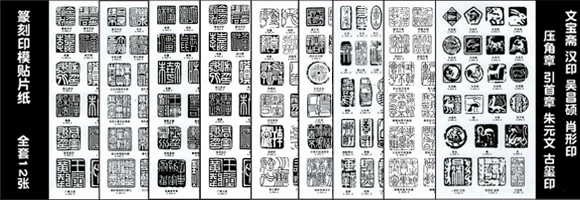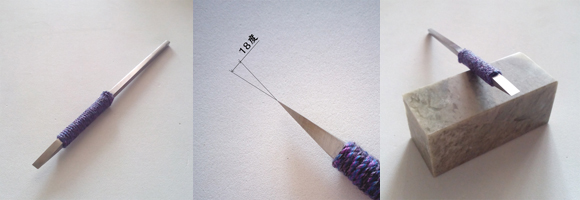书法属性是篆刻作品的主要艺术特质。印章中字体的选择和结构、体态及其适应印面形式的书写法是决定印章艺术性的首要因素。字体的选择又与印作的样式有关。除了偶见选用的楷书、隶书以外,明清篆刻创作主要采用古文字,包括甲骨文、金文、战国文字、小篆以及小篆的几种变体。
篆刻技法体系的形成
System of Seal Engraving Technique
篆刻技法体系主要包括以下几个方面:篆法、章法和刀法。
一、 篆法
书法属性是篆刻作品的主要艺术特质。印章中字体的选择和结构、体态及其适应印面形式的书写法是决定印章艺术性的首要因素。字体的选择又与印作的样式有关。除了偶见选用的楷书、隶书以外,明清篆刻创作主要采用古文字,包括甲骨文、金文、战国文字、小篆以及小篆的几种变体。
The system of seal engraving technique includes script technique, seal composition technique and cutting technique.
Script technique
The main artistic special quality of a seal engraving is its calligraphic nature. The selection and structure of the character script used on a seal, the posture, and the way the writing is adapted to the imprint face are the primary factors that decide the artistic quality of a seal. The selection of the script is also related to the seal pattern. Apart from the occasionally encountered kai standard script and the li official script used previously, the seal engravers of the Ming and Qing dynasties mainly used ancient gu wen script , including that used on oracle bones, bronze script, script used in the Warring States Period, xiao zhuan and its variations.
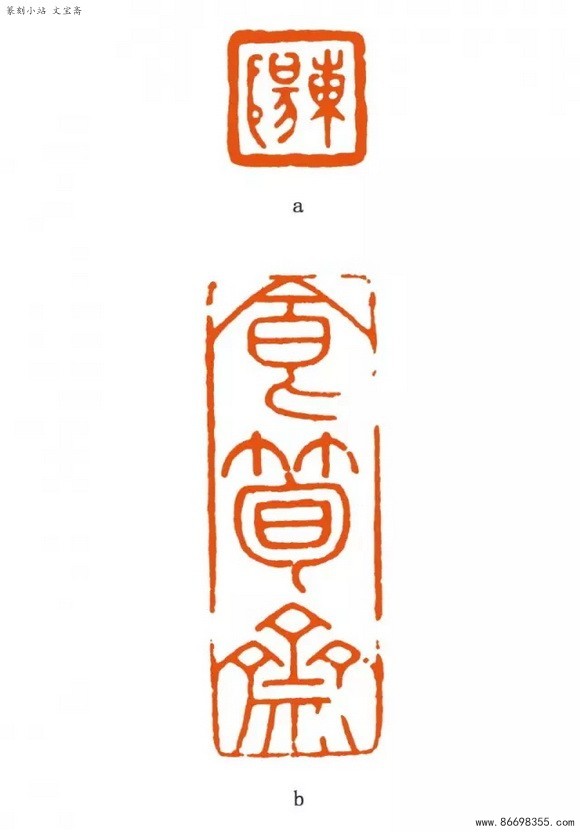
a. 金文,东阳,11*11cm,明,汪关刻
“Dong Yang”,11*11cm,engraved in bronze script by Wang Guan. Ming Dynasty
b. 小篆,“食笋斋”,明,梁大年刻
“Shi SunStudio” in xiao zhuan script, engraved by Liang Danian. Ming Dynasty.
二、 章法
篆刻中的“章法”含义比一般所说的“构图”更为丰富。章法的安排依赖篆法的基础,两者具有相互协同和影响的关系。章法还包括作品外在形式的选择,不同的外在形式具有不同的构图要求。章法更主要的任务是通过多种技术性手段取得印文整体的平衡、协调、变化,处理好文字的疏密、虚实关系,同时也努力体现个人的章法形式风格。
The implications of the term “script technique” are much richer than “pictorial composition” in the general sense. Composition in seal engraving is founded on the character style. The two elements are complementary and mutually influential. The term also encompasses the choice of a work’s external form, different forms entailing different compositions. But the most important duty of seal composition is, by deploying a range of skills, the achievement of overall balance, coordination and transition, deft management of character arrangement and the relationship between density and sparseness, solid and void, thus arriving at the expression of individual form and style.
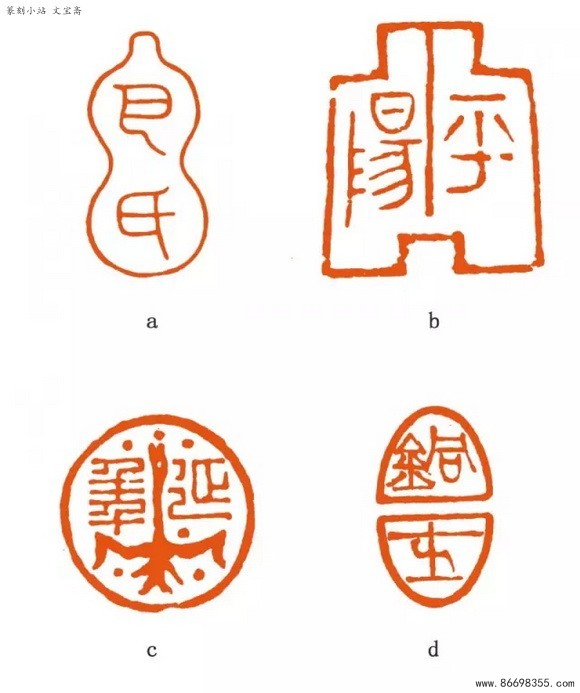
a. 清,巴慰祖刻“巴氏”
“Ba Shi”, engraved by Ba Weizu. Qing Dynasty
b. 清,黄易刻“平阳”
“Ping Yang”, engraved by Huang Yi. Qing Dynasty
c. 清,陈鸿寿刻“延年”
“Yan Nian”, engraved by Chen Hongshou. Qing Dynasty.
d. 清,吴熙载刻“铜士”
“Tong Shi”, engraved by Wu Xizai. Qing Dynasty
明清篆刻部分特殊样式
Some special seal styles from the Ming and Qing dynasties
三、 刀法
刀法是刻印的运刀技巧。篆刻基本的运刀方法是两种:
冲刀
是执刀入石后,持续推进刻出线条的方法。刻成一刀后再另侧反向以同样动作再刻一刀,形成完整的笔画形态,这是双刀冲刀的方法。冲刀刻出的线条一般比较流畅,明清以来的篆刻家大多采用这一方法。刻阴文(白文)也有采用单刀完成笔画的,此种方法使线条保留了一侧的细齿状糙边,具有自然苍莽的效果。阳文(朱文)则需要采用双刀的方法。因此,单刀和双刀是指完成笔画时运刀的次数。
Once the knife cuts into the stone, the cutter keeps pushing the knife forward to produce a cut, forming one side of the stroke. Then, in a second action of the knife, the other side of the stroke is cut, thus completing the desired form of the first stroke. This is called the double-cut pushing method. Lines made by the pushing cut are generally smooth and fluent, and most of the seal engraving masters since the Ming and Qing dynasties have used this method. For intaglio characters, cutters also used a single cut to complete a stroke. This method results in one side of the cut line having a fine-tooth edge, thus producing a naturally infinite effect. Then engraving relief characters, one must use the double-cut method. Therefore, single cut or double cut refers to the number of cuts made in completing a stroke.
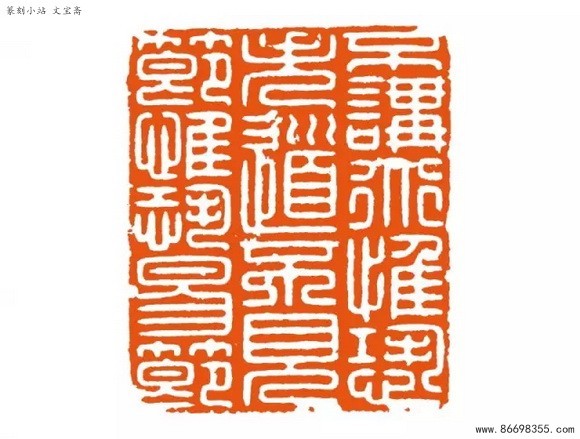
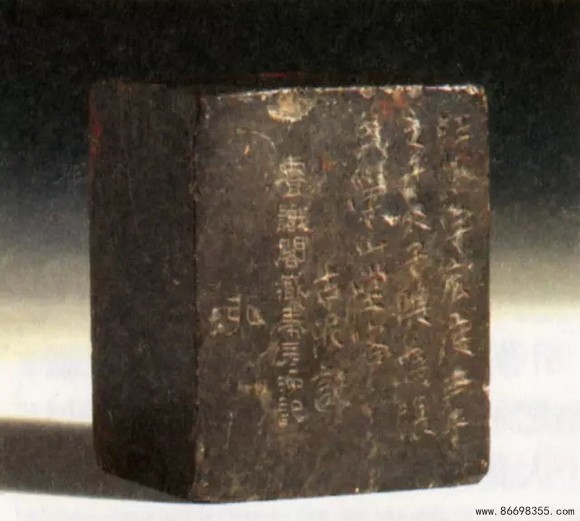
明,汪泓刻“不讲道惟恐失道,不见节惟恐易节”
54cm*45cm,石,上海博物馆藏
Stone seal “without upholding morality, we might lose morality; without stressing integrity, we might lose integrity.”
54*54mm, engraved by Wang Hong. Ming Dynasty. Shanghai Museum
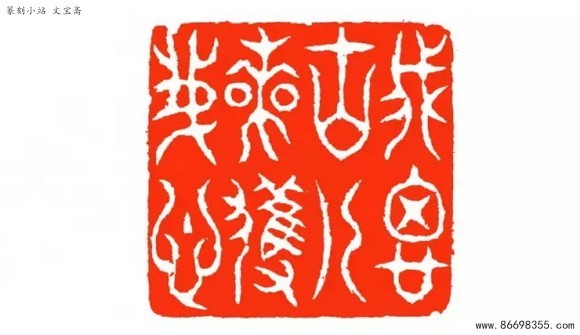
明,苏宣刻“我思古人实获我心”,青田石,上海博物馆藏
Qingtian stone seal “ I think of the ancients, and find what is in my heart.”, engraved by Su Xuan. Ming Dynasty. Shanghai Museum
切刀
与冲刀的区别是执刀入石后,再连续多次起、伏中分段推进,刻出线条。再以相同的方法刻出线条的另一侧,形成笔画。由于多次起伏的连接,自然地形成线条边缘的刀痕,具有凝练苍劲的效果。
Chopping cut
The cut is achieved by pressing rather than pushing the knife into the stone. After the first cut the knife is lifted and then the action is repeated again and again until, section by section, a line is produce. Then the cutter repeats the process from the other side to form a stroke. Since the lines are produced by a linkage of small cuts, the stroke edges naturally display traces of the knife action, thus producing an effect of intensity and vigor.
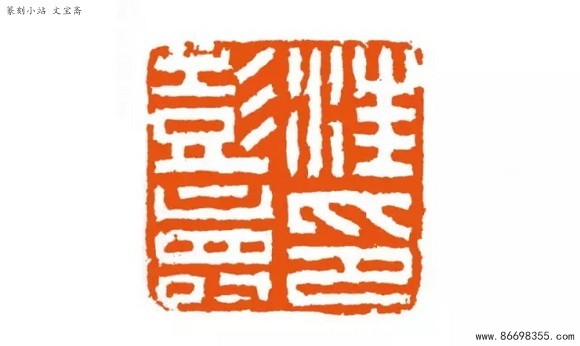
清,丁敬刻“王彭寿印”
“Seal of Wang Pengshou”, engraved by Ding Jing. Qing Dyanasty.
本文节选自孙慰祖:《中国印章-历史与艺术》,外文出版社,2010年。
Sun Weizu: The History and Art of Chinese Seals, Foreign Languages Press, 2010
加微信获取:wenbaozhai365
